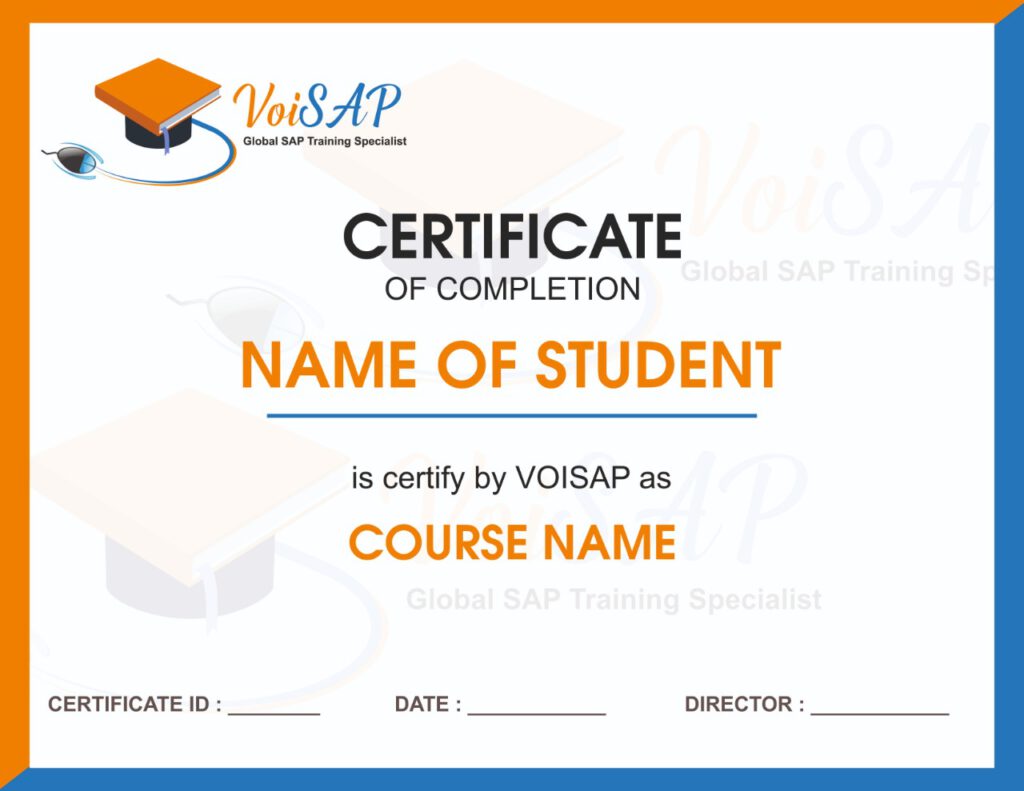
Selenium Certification Training
Eligibility & Pre-requisites
Eligibility
The Selenium Certification Training is ideal for test managers, test engineers, test lead, test analysts, quality assurance engineers, software developers, and engineers who want to learn automation testing with Selenium.Pre-requisites
Basic knowledge of Core Java. This Selenium Certification training starts with a refresher on Core Java where basic concepts are explained.
Selenium Certification Course Overview
This Selenium Certification Training course helps you gain an in-depth knowledge of concepts such as WebDriver, TestNG, Wait, Locating Techniques, AutoIT, Sikuli, Page Object Design Pattern, mobile testing, and Selenium Grid. This Selenium Training features real-world examples to train you to use Selenium WebDriver effectively.
Benefits
Selenium is one of the most popular automation testing tools, which is been increasingly used by organizations all across the globe. according to Indeed. These positions typically attract lucrative annual salaries, ranging from $68,000 for quality assurance analyst jobs to $94,000 for automation engineer roles.
CA: 1-416-569-4606
WhatsApp – 1-416-569-4606
Email – contact@voisap.com
Request more information
Like the curriculum? Enroll Now
Structure your learning and get a certificate to prove it.
Skills Covered
Training Options
Batches
- Lifetime access to high-quality eLearning
- 2000 Step-by-Step Screenshots, SAP Books
- Lifetime System Access
- Free Accounts and Excel Sessions
- 24x7 learner Whatsapp assistance and support
- Professional Resume
- Intense Interview Preparation
- Linkedin Preparation
- Free 6 Months On-the-Job Support
One-on-One (Recommended)
- EVERYTHING OF BATCHES PLUS...
- Lifetime System Access
- Schedule Sessions at your convenience, ANYDAY, ANYTIME
- Ability to cancel, postpone, reschedule sessions (No anxiety of missing sessions)
- Missed sessions? No Problem, Join Full Training as many times
- Access to Realtime Project Documents as Samples
- Access to Exclusive VoiSAP Practice Guides
CORPORATE TRAINING
(Online, Client sight)
Customized to your team's needs
- EVERYTHING OF BATCHES PLUS...
- Customized Training for your Business Processes
- Customized Training Manuals, Documents
- Well Experienced Corporate Trainers
- Simulation test papers for self-assessment
- Simulation test papers for self-assessment
- 24x7 learner assistance and support
Course Currilcum
Lesson 01 - Core Java Refresher
1.1 Keywords and Syntax
1.2 variables, operators, and control flows
1.3 OOPs overview from Java context
1.4 Exception Handling, File and DB handling
1.5 Collections overview, and ArrayList example
Lesson 02 - Automation Basics
2.1 Fundamentals of test automation
2.2 ROI in Automation
2.3 Automation framework
2.4 Various tools and comparison with Selenium
Leson 03 - Introduction to Selenium WebDriver
3.1 What Selenium is and how it is used in the industry
3.2 Features of Selenium
3.3 Selenium IDE - Overview with a couple of examples
3.4 WebDriver Architecture
3.5 Installation of Selenium and supporting tools/Frameworks
Lesson 04 - Locating Techniques
4.1 Simple WebDriver Program Demonstration
4.2 Basics of HTML page, tags, attributes, and visible texts
4.3 Importance of attributes in locating elements
4.4 Installation of Firebug and Firepath in Firefox browser
4.5 Locators and Eight Locating Techniques
4.6 Creating robust locators using CSS and XPath
Lesson 05 - WebDriver Basics - I
5.1 Execute Tests in Firefox, Chrome, and Internet Explorer
5.2 WebDriver Commands: Driving Browsers and Handling Cookies
5.3 WebElement Commands
5.4 Handling Various WebElements
5.5 WebDriver Timeout Methods
Lesson 06 - WebDriver Basics - II
6.1 Handling Multiple elements using findElements() method
6.2 Handling Alerts, Pop-ups, and Frames
6.3 Limitation of Implicit Wait and how Explicit Wait helps
6.4 Advanced User Interactions
6.5 Taking Screenshots
6.6 Working with Firefox profiles
6.7 Handling File Uploads Using AutoIT
6.8 Introduction to Flash Application Testing using Selenium WebDriver
Lesson 07 - TestNG
7.1 Arranging Tests in 3-As format
7.2 F.I.R.S.T Principles and SRP
7.3 Various Annotations in TestNG
7.4 TestNG configuration file
7.5 Configuration Annotations
7.6 Attributes of @Test
7.7 Parallel Test Execution Capability
7.8 Assertion APIs
7.9 Passing Parameters to Tests
7.10 Configuring Test Suites
7.11 Reports using TestNG
7.12 Reports using ReportNG
Lesson 08 - WebDriver - Framework
8.1 Introduction to various frameworks
8.2 Page Object Design Pattern
8.3 Data Driven Tests using TestNG and POI
8.4 Introduction to Maven and ANT
8.5 Use of Log4j
8.6 Use of Listeners
8.7 Typical components of a framework
8.8 Overview of BDD, TDD
8.9 Code Coverage in Java
8.10 Overview of Sikuli tool for UI testing
8.11 Introduction to Jenkins
8.12 Configuring Jenkins to invoke Selenium Tests
Lesson 09 - Selenium Grid
9.1 What is Selenium Grid?
9.2 When to Use Selenium Grid
9.3 Setting up Grid - Hub and Nodes?
9.4 Configuring TestNG.xml to run tests on Grid
Lesson 10 - Project Execution
10.1 Automate an eCommerce Application
10.2 Test Automation Requirements Description
10.3 What Next ? How to Start?
10.4 High Level Framework
10.5 Configurability—No To Hard-Coding
10.6 Modularity—Re-Use And DRY
10.7 Test Data Management
10.8 Logging And Reporting
Lesson 11 - Mobile App Test Automation Using Appium
11.1 Introduction Mobile App Test Automation
11.2 Introduction to Appium
11.3 UIAutomator with Appium
11.4 Locating Elements - UIAutomator framework
11.5 DesiredCapabilities for Android
Lesson 01 - Introduction
30:10Preview1.1 Introduction
00:181.2 Lesson Objectives
00:231.3 Java Definition
00:261.4 Java Virtual Machine (JVM)
00:341.5 Working of Java
01:001.6 Running a Basic Java Program
00:551.7 Running a Basic Java Program (contd.)
01:141.8 Running a Basic Java Program in NetBeans IDE
00:111.9 BASIC JAVA SYNTAX
00:121.10 Data Types in Java
00:261.11 Variables in Java
01:311.12 Naming Conventions of Variables
01:211.13 Type Casting
01:041.14 Operators
00:291.15 Mathematical Operators
00:281.16 Unary Operators
00:151.17 Relational Operators
00:181.18 Logical or Conditional Operators
00:191.19 Bitwise Operators
00:331.20 Static Versus Non Static Variables
00:541.21 Static Versus Non Static Variables (contd.)
00:171.22 Statements and Blocks of Code
01:211.23 Flow Control
00:471.24 If Statement
00:411.25 Variants of if Statement
01:061.26 Nested If Statement
00:401.27 Switch Statement
00:361.28 Switch Statement (contd.)
00:341.29 Loop Statements
01:191.30 Loop Statements (contd.)
00:491.31 Break and Continue Statements
00:431.32 Basic Java Constructs
01:091.33 Arrays
01:161.34 Arrays (contd.)
01:071.35 JAVA CLASSES AND METHODS
00:091.36 Classes
00:461.37 Objects
01:201.38 Methods
01:011.39 Access Modifiers
00:481.40 Summary
00:411.41 Thank You
00:09
Lesson 02 - Java Constructors
21:11Preview2.1 Java Constructors
00:212.2 Objectives
00:412.3 Features of Java
01:072.4 Classes Objects and Constructors
01:182.5 Constructors
00:342.6 Constructor Overloading
01:082.7 Constructor Overloading (contd.)
00:282.8 PACKAGES
00:082.9 Definition of Packages
01:122.10 Advantages of Packages
00:292.11 Naming Conventions of Packages
00:282.12 Inheritance
00:082.13 Definition of Inheritance
01:062.14 Multilevel Inheritance
01:152.15 Hierarchical Inheritance
00:232.16 Method Overriding
00:542.17 Method Overriding(contd.)
00:342.18 Method Overriding(contd.)
00:152.19 ABSTRACT CLASSES
00:092.20 Definition of Abstract Classes
00:402.21 Usage of Abstract Classes
00:362.22 INTERFACES
00:082.23 Features of Interfaces
01:022.24 Syntax for Creating Interfaces
00:232.25 Implementing an Interface
00:222.26 Implementing an Interface(contd.)
00:132.27 INPUT AND OUTPUT
00:142.28 Features of Input and Output
00:482.29 System.in.read() Method
00:192.30 Reading Input from the Console
00:302.31 Stream Objects
00:212.32 String Tokenizer Class
00:432.33 Scanner Class
00:312.34 Writing Output to the Console
00:282.35 Summary
01:022.36 Thank You
00:13
Lesson 03 - Essential Classes and Exceptions in Java
28:04Preview3.1 Essential Classes and Exceptions in Java
00:183.2 Objectives
00:303.3 The Enums in Java
00:593.4 Program Using Enum
00:433.5 ArrayList
00:403.6 ArrayList Constructors
00:383.7 Methods of ArrayList
01:023.8 ArrayList Insertion
00:473.9 ArrayList Insertion (contd.)
00:373.10 Iterator
00:383.11 Iterator (contd.)
00:333.12 ListIterator
00:463.13 ListIterator (contd.)
01:003.14 Displaying Items Using ListIterator
00:313.15 For-Each Loop
00:343.16 For-Each Loop (contd.)
00:223.17 Enumeration
00:303.18 Enumeration (contd.)
00:253.19 HASHMAPS
00:153.20 Features of Hashmaps
00:553.21 Hashmap Constructors
01:363.22 Hashmap Methods
00:583.23 Hashmap Insertion
00:403.24 HASHTABLE CLASS
00:163.25 Hashtable Class an Constructors
01:243.26 Hashtable Methods
00:403.27 Hashtable Methods
00:473.28 Hashtable Insertion and Display
00:293.29 Hashtable Insertion and Display (contd.)
00:213.30 EXCEPTIONS
00:213.31 Exception Handling
01:063.32 Exception Classes
00:263.33 User-Defined Exceptions
01:043.34 Types of Exceptions
00:433.35 Exception Handling Mechanisms
00:533.36 Try-Catch Block
00:153.37 Multiple Catch Blocks
00:403.38 Throw Statement
00:323.39 Throw Statement (contd.)
00:253.40 User-Defined Exceptions
00:103.41 Advantages of Using Exceptions
00:253.42 Error Handling and finally block
00:273.43 Summary
00:403.44 Thank You
00:03
Confused about your Career? Take Free Career counselling
What our eLearners say about us
Excellence speaks for itself. Experience us through Authentic Google Reviews and Videos.
Google Reviews





Like the curriculum? Enroll Now
Structure your learning and get a certificate to prove it.
Certification
As part of our eLearning program, you will be practically involved in various projects and assignments, which include Realtime Project Scenarios as well. This gives you realtime practical industry exposure.
VoiSAP’s certificate will be issued once you successfully complete the training which includes practicals, assignments and quiz.
VoiSAP’s certification training is recognized by more than 500 top MNCs, including CGI, Accenture, Walmart, Amazon, IMAX, Sony, RBC, HSBC, Standard Chartered Bank, IBM, Infosys, Lafarge, TCS, and many more.

SAP FICO Training FAQs
- This Selenium Certification Training has been designed to help developers and manual testers learn how to automate web applications with a robust framework, and integrate it within the DevOps processes of an organization. A lot of real-life examples and situations to demonstrate how to use Selenium WebDriver effectively are covered in this Selenium Certification course.
- The Selenium Certification Training starts with a refresher course on core Java concepts and covers the basics of Test Automation and its importance in the industry. Special focus is given on building a robust framework with Page Object Design Pattern, Data-Driven Approach, and creating reusable components to improve productivity.
This course will enable you to:
- Revise the Core Java concepts essential for learning Selenium WebDriver
- Understand the scope of test automation in DevOps and its fundamentals
- Create test cases using Selenium IDE – Record and Playback tool
- Understand Selenium WebDriver architecture and various layers of interaction
- Set up WebDriver project in Eclipse and write test cases using TestNG
- Locate elements using various locating techniques
- Work with various WebDriver commands to drive web browser and WebElement commands to deal with certain web components
- Learn to handle various possible scenarios related to pop-ups, multiple windows, frames, and taking screenshots
- Implement Page Object Design Pattern and Data-Driven Testing
- Understand how to use Maven, ANT, AutoIT, Sikuli, log4j, and listeners
- Learn to use Selenium Grid with TestNG for parallel execution
- Execute a project from scratch by building automation framework and automating a few test scenarios
Once you are done with your Selenium Certification these are the popular job roles that an automation testing company can offer you:
- Selenium automation engineer
- Selenium tester
- Senior quality engineer – automation
- Mobile testing lead
- Java Selenium automation engineer
- Selenium test analyst
- Senior QA automation engineer
- Software development test engineer
Major companies hiring Selenium testers include:
- Microsoft
- Cognizant
- HP
- Accenture
- Capgemini
- ORACLE
This Selenium Training includes:
- In-depth knowledge of concepts such as WebDriver, TestNG, Wait, locating techniques, AutoIT, Sikuli, Page Object Design Pattern, mobile testing, and Selenium Grid
- A project where you create the test automation for an ecommerce application with a framework and reporting

